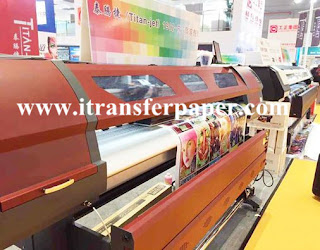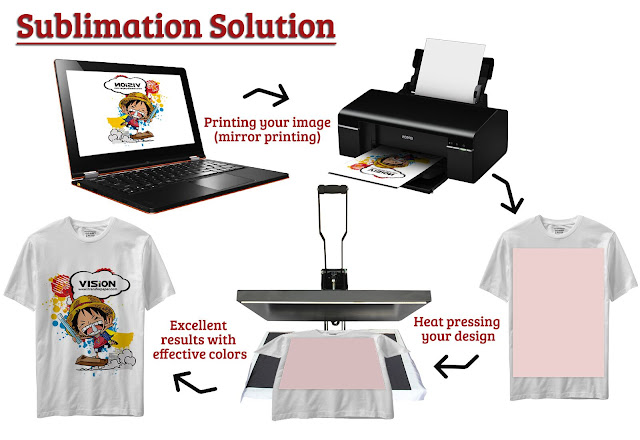Dye-Sublimation Printing Process and its Pros and Cons
The dye-sublimation printing process is used to print on polyester or other synthetic fabrics. It is used for applications such as T-shirts, Banners, Table Covers, Id Cards, Sportswear and Flags. The original printers were an electrostatic technology using toners but now are generally large format inkjet printers using specially formulated inks. The dye sublimation inks are a disperse dye suspended in a liquid solvent, like water. The images are initially printed on coated heat-resistant transfer paper as a reverse image of the final design, which is then transferred onto polyester fabric in a heat press operating at a temperature around 180 to 210 C (375 F). Under high temperature and pressure, the dye turns into a gas and permeates the fabric and then solidifies into its fibers. The fabric is permanently dyed so it can be washed without damaging the quality of the image.
Advantages of dye-sublimation over other methods of textile printing:
a, Images are permanent and do not peel or fade.
b, Dye does not build up on the fabric.
c, Colors can be extraordinarily brilliant due to the bonding of the dye to the transparent fibers of the synthetic fabric.
d, Truly continuous tones can be achieved that are equivalent to photographs, without the use special techniques such as half-screen printing.
e, The image can be printed all over the entire item, with no difficulty in printing all the way to the edges.
Disadvantages:
a, The printer speed is low.
b, Any creases in the apparel during printing leave blank spots behind.
Email:vision@itransferpaper.com




评论
发表评论
see more on our web www.itransferpaper.com